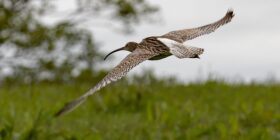75th Anniversary: “They couldn’t have won Battle of Britain without RAF Sealand”

The Queen and members of the Royal Family members will be on the balcony of Buckingham Palace today (Friday 10th) to watch a flypast of aircraft including Hurricanes and Spitfires to mark the 75th anniversary of the start of the Battle of Britain.
The Battle of Britain Memorial Flight based at RAF Coningsby in Lincolnshire will perform this mornings flypast along with a Eurofighter Typhoon painted in the colours used at the time of the battle.

A superb BBC blog post by James Roberts takes a look at the part RAF Sealand and RAF Hawarden played in the Battle of Britain which began 75 years ago today.
James writes;
As the Luftwaffe’s incendiary bombs fell from Heinkel bombers and repelling the German threat was imperative to national survival.
The main RAF bases in Wales included RAF Pembrey in Carmarthenshire, St Athan in the Vale of Glamorgan, RAF Hawarden and RAF Sealand near the Dee estuary.
As raids on Britain increased, RAF Hawarden and Sealand, situated just a few miles apart and separated by the River Dee near Deeside were integral cogs in the Battle of Britain – a fact underlined by aviation historian and author Mike Grant.
“They couldn’t have won the Battle of Britain without RAF Sealand and RAF Hawarden and places like it,” states Mike. “They were training stations, but sometimes whole squadrons were moved to these places to regroup. They would be on the alert. We were the backup service.”
Throughout 1940, the whole of North East Wales was populated with a variety of aircraft, airmen and ground crews.
As Liverpool was blitzed in July 1940, the land mass of North Wales came under the command of the RAF’s 9 Group which incorporated Lancashire and parts of Cheshire.
Mike’s co-author and fellow historian Derrick Pratt alludes to the ways and reasons North Wales became increasingly defended.
“It was a resting place,” offers Derrick, “all the squadrons that came into Wales were battle weary…shot to pieces and farmed into back areas to maintain a defensive presence, but also to rest.
“The bombs that fell on Merseyside are as vital to the make up of the Battle of Britain as the bombs that fell on the East End of London,” says Derrick. “9 Group, which was very late being formed covered north Wales and that wasn’t formed until August 1940; half way through the Battle of Britain.
“However, it wasn’t formed in response to the Battle of Britain,” continues Derrick, “it was formed in response to the attacks on Liverpool. Airfields in France fell with France, and the Germans were gifted 30 to 40 French military airfields and instead of attacking via London and South East England (where 11 and 12 Group were waiting for them), they flew from France, across the English Channel and across the south West peninsular where hopefully they would be intercepted by RAF pilots.”
The exploits of 11 Group have, historically, become the focus of memory. It was the airmen of this group and their planes that faced the brunt of the Luftwaffe threat during the summer and early autumn of 1940.

A couple of hundred miles away from the Kent airfields of Biggin Hill and West Malling some of ‘the few’ that would win the Battle of Britain cut their teeth at Hawarden and Sealand.
“Since 1920, pilots trained in three ways,” confirms Mike. “Trainees started off on a Tiger Moth and after your basic training, you’d move on to an elementary flight training school where you were taught the basics of flight. The first aircraft you would have been introduced to, would have been a Tiger Moth or a Miles Master.
“If you managed to survive the initial training, you would now know how to fly a fighter aircraft,” adds Mike. “The type of fighters trainees commonly used were the Spitfire and the Hurricane. Trainees would then be transferred to an operational training unit, and if you were lucky enough not to have to travel far, you would pass over the river to Hawarden and fly Spitfires, or a Hurricane in the early days.”
The training at Sealand and Hawarden was, in many ways, as dangerous as the combat that pilots were training for.
Thousands of young pilots faced using the much more powerful Spitfires and Hurricanes for the first time, and many wouldn’t make it.
“They were taught total aerobatics at Sealand and expected to do it with the Spitfires at Hawarden,” adds Mike, “and, the horrific number of accidents involving our own aircraft…over 4,000 were damaged ranging from just the undercarriage to complete write offs.”
“If you went into the elementary training school at Sealand, you would have been introduced to the Master, which was a duplicated, down-rated Spitfire or Hurricane. During the training the losses in this particular area were heavy; especially during night exercises where there were some horrific accidents.”
James Robert blog ‘The Battle of Britain: training days’ was published by BBC blogs on Wednesday 28 July 2010.
Latest News









